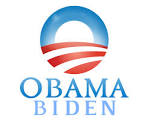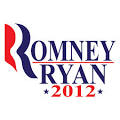A Game-Theoretic Approach to Selecting Vice-Presidential Nominees
As we are in the midst of heated Republican and Democratic presidential debates, it seems fitting to examine the results of this research paper on electoral competition strategies that was conducted earlier this year. In it, researchers Thomas P Krumel Jr and Ali Enami discuss the rationale behind Presidential candidate Mitt Romney’s choice in picking a very conservative member of the House of Representatives, Paul Ryan, as his running mate in the 2012 presidential election. Running mate selection is a highly strategic decision involving game-theoretic analysis of who could help a candidate secure the ticket to the presidency. The authors in this paper implement a one-dimensional policy game of the second stage of a presidential election with a Democrat incumbent and a Republican challenger, in which they try to characterize the outcomes when a challenger selects a more or less conservative running mate. They use the notion of optimal distance and more advanced set of equations to show that Romney made the correct, rational decision in selecting a more conservative running mate.
They suggest that two of the major factors to consider in analyzing such a game are asymmetries and the median voter model. Asymmetry refers to the notion that one political candidate can have a significant advantage over another. The critical asymmetry in general elections is that the incumbent (president) often has more visibility and power than challengers. The median voter model, in summary, suggests that to increase voter turnout and win an election, the policy platforms of a candidate should converge to the median voter’s preferences.
What complicates this a little more and has been studied in recent years is the two-stage nature of presidential elections – primaries and general elections. In 2012, Republican challengers faced the task of mobilizing a conservative base by leaning to their ideology. There was also a cost associated with this action in that the general median voter has a more central political stance on issues, and politicians that pander to the far-right face head winds in general election. Adjusting platforms to become more neutral also has the cost of the candidate being characterized as “flip-flopping”. The authors term this pandering equilibrium politicians need as a “post-primary moderation effect”, where they pander to extremes in the primaries and slightly converge to neutral grounds in general elections.
Ultimately, the researchers develop a theoretical model which shows that a selection of a very conservative vice-presidential nominee by a moderate presidential candidate can be optimal by way of helping mobilize voter turnout of the more conservative base and less so by winning over independents/undecided voters. They also cite past studies showing that challengers for presidency most often have opposing political ideology to the incumbent, which makes sense since running on the same platform would render it difficult for challengers to distinguish themselves. In the end, given the asymmetry the Republican candidate faced, trying to increase in-house voter turnout to win the election by selecting a very conservative republican was a rational choice, although it might not have seemed like it at first glance.
Extending this analysis to the current election cycle, one ponders how far-right the Republican party (or at least some candidates) have gone, and what choices they face if they reach the general election. Try to pander to the center and risk losing your central base because of flip-flopping, or stick to the far-right? At least in this research, when the incumbent has a significant asymmetry over challengers, sticking to your own conservative base and increasing own-party voter turnout provides, if not the desired outcome, a better one than would otherwise occur.
This study provides a good road map into how game-theoretic analysis can be applied not only in simple scenarios where the costs and benefits are easy to compute but also practical situations where there are varying degrees of costs and benefits to the choices one can make.
Works Cited
Krumel Jr, Thomas, and Ali Enami. “Balancing the Ticket While Appealing to the Base: The Game Theory behind Mitt Romney’s Selection of Paul Ryan as His Presidential Running Mate.” Party Politics (2015). Sage Journals. Web. 16 Oct. 2015.
http://ppq.sagepub.com/content/early/2015/09/23/1354068815603625.full.pdf html


